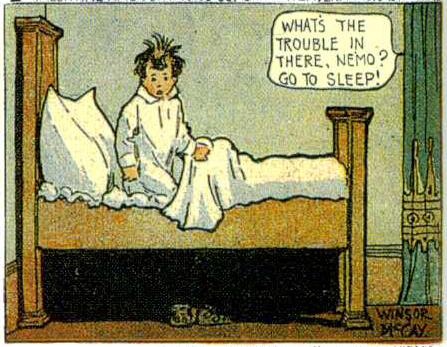|
Whiffenpoof
A whiffenpoof was a tool for training Boy Scouts in tracking skills. The whiffenpoof itself was a small log, about the size of a stick of firewood, with nails driven into it on all sides, so that it bristled with nails. This was dragged through the forest on a short leash, by the older Scouts who were training the younger. It might thus create a track that the tenderfoot must learn to trace out. Or it might, alternately, be dragged across a trail in order to confuse the trackers. The fewer nails that were driven into it, the more difficult and subtle was the effect. Thus it is that the word whiffenpoof can also refer to an imaginary or indefinite animal; e.g. "the great-horned whiffenpoof". It originates from actor Joseph Cawthorn's ad-lib in a 1908 performance of the operetta '' Little Nemo''. He was told to stall for time while something was corrected backstage. In the scene, his character described imaginary prey he had hunted, so he created the "water-dwelling, food-gobbling" w ... [...More Info...] [...Related Items...] OR: [Wikipedia] [Google] [Baidu] |
Little Nemo
Little Nemo is a fictional character created by American cartoonist Winsor McCay. He originated in an early comic strip by McCay, ''Dream of the Rarebit Fiend'', before receiving his own spin-off series, ''Little Nemo in Slumberland''. The full-page weekly strip depicted Nemo having fantastic dreams that were interrupted by his awakening in the final panel. The strip is considered McCay's masterpiece for its experiments with the form of the comics page, its use of color and perspective, its timing and pacing, the size and shape of its panels, and its architectural and other details. ''Little Nemo in Slumberland'' ran in the ''New York Herald'' from October 15, 1905, until July 23, 1911. The strip was renamed ''In the Land of Wonderful Dreams'' when McCay brought it to William Randolph Hearst's ''New York American'', where it ran from September 3, 1911, until July 26, 1914. When McCay returned to the ''Herald'' in 1924, he revived the strip, and it ran under its original titl ... [...More Info...] [...Related Items...] OR: [Wikipedia] [Google] [Baidu] |
Joseph Cawthorn
Joseph Bridger Cawthorn (March 29, 1868 – January 21, 1949) was an American stage and film comic actor. Biography Born on March 29, 1868, in New York City to a minstrel-show family, Cawthorn started out in show business as a child, debuting at Robinson's Music Hall in New York in 1872. He appeared in minstrel shows and vaudeville as a "Dutch" comic, employing a thick German dialect. He later worked in British music halls and American touring companies. Cawthorn made his Broadway debut in 1895, 1897 or 1898, and embarked on a long career lasting over two decades. His first success was playing Boris in Victor Herbert's 1898 operetta '' The Fortune Teller''. Other notable Broadway roles included the title character in ''Mother Goose'' (1903) and inventor Dr. Pill in the fantasy musical ''Little Nemo'' (1908). In the latter, he was called upon to ad lib to buy time during one performance while a problem backstage was dealt with. As "the scene called for him to describe imagin ... [...More Info...] [...Related Items...] OR: [Wikipedia] [Google] [Baidu] |
Jackalope
The jackalope is a mythical animal of North American folklore described as a jackrabbit with antelope horns. The word ''jackalope'' is a portmanteau of ''jackrabbit'' and ''antelope''. Many jackalope taxidermy mounts, including the original, are made with deer antlers. In the 1930s, Douglas Herrick and his brother, hunters with taxidermy skills, popularized the American jackalope by grafting deer antlers onto a jackrabbit carcass and selling the combination to a local hotel in Douglas, Wyoming. Thereafter, they made and sold many similar jackalopes to a retail outlet in South Dakota, and another taxidermist continues to manufacture the horned rabbits in the 21st century. Stuffed and mounted, jackalopes are found in many bars and other places in the United States; stores catering to tourists sell jackalope postcards and other paraphernalia, and commercial entities in America and elsewhere have used the word ''jackalope'' or a jackalope logo as part of their marketing strategie ... [...More Info...] [...Related Items...] OR: [Wikipedia] [Google] [Baidu] |
Placeholder Name
Placeholder names are words that can refer to things or people whose names do not exist, are tip of the tongue, temporarily forgotten, are not relevant to the salient point at hand, are to avoid stigmatization, are unknowable/unpredictable in the context in which they are being discussed, or are otherwise de-emphasized whenever the speaker or writer is unable to, or chooses not to, specify precisely. Placeholder names for people are often list of terms referring to an average person, terms referring to an average person or a predicted persona (user experience), persona of a typical user. Linguistic role These Free variables and bound variables, placeholders typically function grammar, grammatically as nouns and can be used for people (e.g. ''John Doe, John Doe, Jane Doe''), objects (e.g. ''Widget (economics), widget''), locations ("Main Street"), or places (e.g. ''Anytown, USA''). They share a property with pronouns, because their reference, referents must be supplied by co ... [...More Info...] [...Related Items...] OR: [Wikipedia] [Google] [Baidu] |

_Plate_XLVII.jpg)